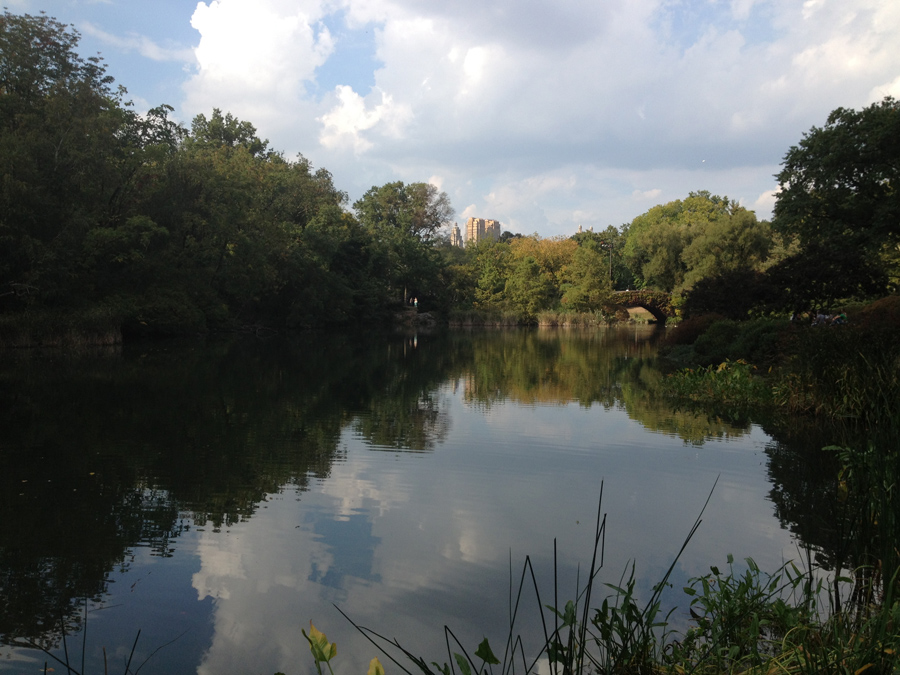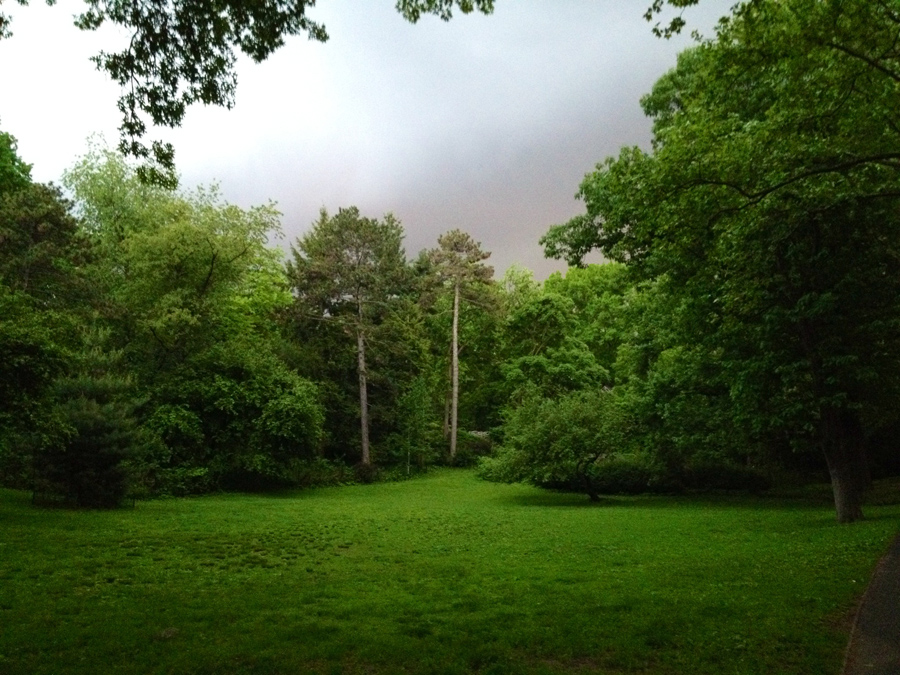
Central Park has provided a serene escape from the busy streets of New York City since it opened in 1857. Now it is the subject of a report from Columbia University, titled “Climate Change Resilience Planning,” and written for the Central Park Conservancy Institute (the educational arm of the Central Park Conservancy).
The Columbia report discusses the need to plan for climate change in Central Park’s future, but begins by recognizing the ways in which the park provides irreplaceable benefits to the city and its people. To a New Yorker, trying to explain the value of Central Park is a bit like trying to explain the value of the air we breathe, but the report provides a practical list: Central Park encourages physical activity, serves as a destination for educational school trips, and has been a very valuable site for film, television, and photography. As the Smithsonian magazine reported in January, living near a park is known to provide profound, positive effects on physical and mental health. (Additional research about the psychological and civic value of parks has been covered in Atlantic Cities and the BBC, including the observation that moving near a park may make you more pervasively happy than winning the lottery.)
Efforts we make now to limit emissions to slow climate change, and to promote urban resilience with thoughtful park management, will have long rewards, as a healthy park clearly makes for a healthier city.
The park has a high degree of biodiversity and according to the report, “Biodiversity plays an important role in climate change resilience. The more diverse an ecosystem is, the more likely it is to thrive, recover from disturbances and adapt to changes in a shorter time frame.” Continuing to enhance Central Park’s biodiversity will increase its resilience to climate change, and make it a suitable habitat for more plants and animals. For example, the park currently serves as a popular resting place for many of the bird species that migrate along the East Coast.

The three main ecosystems in the park are the urban forest, the urban aquatic system (such as lakes), and the urban lawns, and the report details how climate change may affect each.
The park’s urban forest ecosystem includes all the trees, many of which are in forested areas such as the Ramble and the North Woods. Older trees and seedlings will be put at the most risk by climate change, while healthy young trees will have more ability to adapt. A gradual increase in temperature might cause an increase in tree growth at first by speeding up photosynthesis. However, climate change will make heat waves more frequent and intense, and this will harm tree growth and decrease the availability of the water that trees need to live.
Climate change will also cause an increase in precipitation – in the winter, this will likely mean more ice or snow gathering on tree branches, which could cause branches to break off. The more frequent extreme weather events (as mentioned earlier) could cause flooding, which can uproot trees.[pullquote align=”right”]Efforts we make now to limit CO2 emissions will have long rewards, as a healthy park makes for a healthier city. [/pullquote]
Trees also prevent soil erosion. As climate change brings increases in precipitation and extreme weather events, the presence of trees and other vegetation can reduce damage to the park and the city. Management of trees in the park is also important to promote climate resilience. Hurricane Sandy destroyed over one thousand trees in the park in 2012, and Sandy was one example of the kind of weather event that will likely become more common as heat energy rises in our climate system.
The park’s urban aquatic ecosystem includes bodies of water, such as the Pond, the Lake, Turtle Pond, the Reservoir, the Pool, and the Harlem Meer. Most of the aquatic species in these places are generally suited to certain temperature conditions. Any species that won’t easily adapt easily to temperature changes, such as those that reproduce less often, will be harmed.
Warmer temperatures encourage the undesired growth of algae. These temperatures also make oxygen less dissolvable in the water, creating “dead zones,” areas that can’t support life due to low oxygen. A rise in precipitation will increase the amount of runoff that ends up in lakes, and as runoff commonly contains toxic substances, this will reduce aquatic organism populations. More frequent heat waves will reduce populations of zooplankton, which are an important part of aquatic food chains. Heat waves will especially affect shallow lakes and are likely to harm the fish and other vertebrate species in them.
The Sheep Meadow, the Great Lawn, and the North Meadow are all part of the park’s urban lawns ecosystem. Warmer temperatures will boost the growth of lawns at first, as in the forest ecosystem. However, this higher growth rate together with the increased rainfall will make the soil more acidic, so keeping the soil at a usable pH will become difficult. Changes in the winter climate may make the soil less able to store inorganic nitrogen (compounds of nitrogen that are not naturally found in organisms). This may allow the nitrogen to pollute nearby water, making the water unsafe for pond life.
Frequent heat waves may cause periods with little rainfall in the summer, during which the soil may become drier and harder and the grass will die back. Such droughts could also harm the microbes and fungi – these are important to the soil because they act as decomposers, breaking down organic matter into usable nutrients.

The fact that Central Park, such a famous and well-loved part of the city, will be impacted by the growing effects of climate change may motivate New Yorkers to respond to a global challenge and work toward real solutions. In addition, data about Central Park in a high-CO2 atmosphere hints at how so many different animals, forests, lakes, rivers, fields, and cities elsewhere in the world will be equally disrupted by our new conditions.
While climate change is an immense global problem, its effects will commonly be felt at the smallest level, within parks, families, and our city. But with Central Park as our guide, New York City and its residents may lead towards designing a livable and healthy future for everyone.